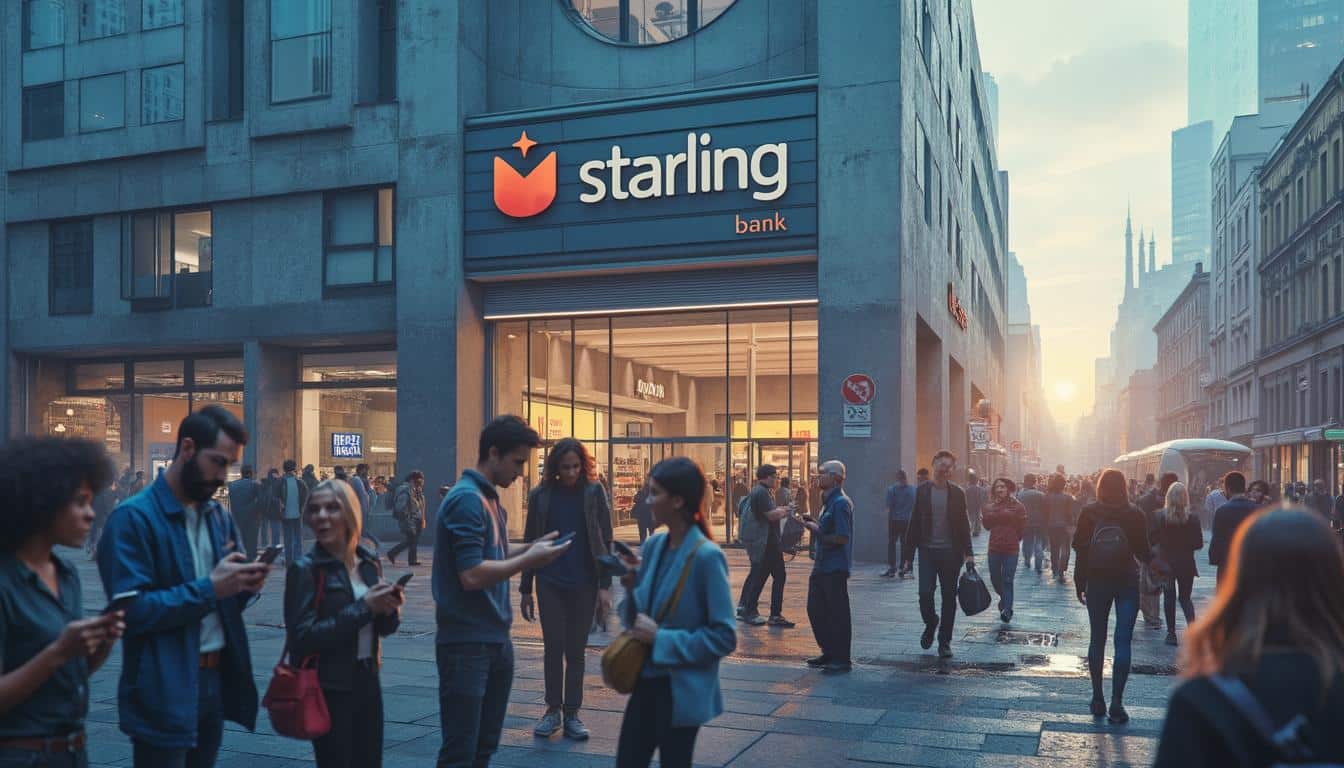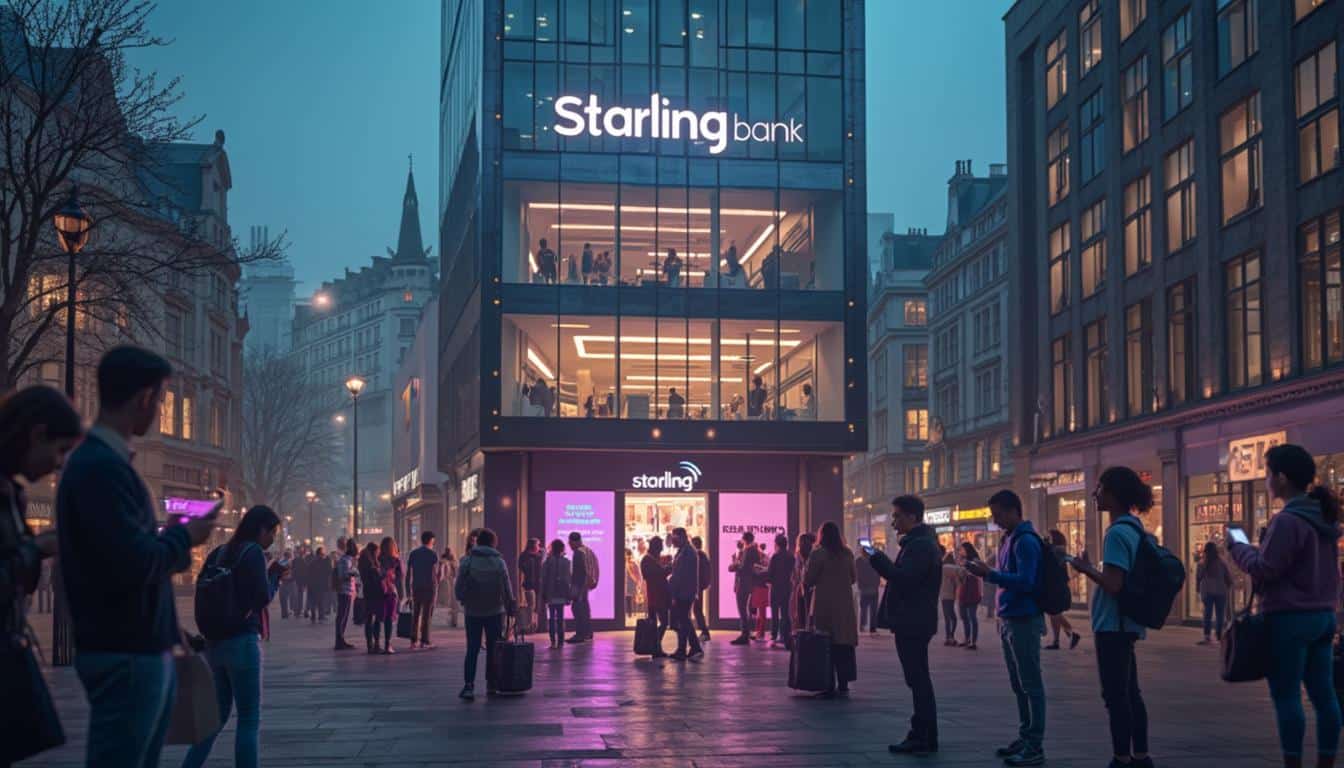Fintechs have revolutionized the banking landscape over the past decade. Starling, Monzo, and Revolut have paved the way by redefining financial services. While some thrive, others encounter unexpected obstacles.
Revolut is reporting profitability exceeding £1 billion this year, even surpassing HSBC with over 50 million customers. Monzo is preparing for a spectacular IPO at £6 billion on the London Stock Exchange, witnessing its meteoric growth. However, Starling is going through a tumultuous period, with a drop in profits and heavy regulatory fines. Regulatory challenges and criticized risk management threaten Starling’s position among industry leaders.

Table of Contents
Togglestarling’s rise in the fintech landscape
More than a decade ago, the banking sector was profoundly transformed by the arrival of three fintech innovators: Starling, Monzo, and Revolut. These neobanks quickly captured the market by leveraging modern technologies to simplify banking operations, enhance customer experience, and disrupt traditional financial models. Thanks to their digital-first approach, they managed to attract millions of customers in record time.
Starling distinguished itself through its commitment to financial inclusion, offering accessible and innovative banking services. With features such as business accounts, cash management solutions, and an intuitive mobile app, Starling has successfully cultivated a large customer base, comprising both individuals and businesses.
The rise of Starling has also been propelled by strategic partnerships and heavy investments in technology. The bank’s ability to constantly innovate and respond to the evolving needs of its customers has been a key factor in its initial success. Furthermore, the fintech has positioned itself as a major player in the crowdfunding space, allowing its users to fund various projects through online fundraising.
Meanwhile, Revolut and Monzo have also experienced spectacular growth. Revolut, for example, has recorded profits of over a billion pounds this year, with a customer base exceeding 50 million, even surpassing the European giant HSBC. On its side, Monzo is preparing for a spectacular IPO, aiming for a valuation of £6 billion on the London Stock Exchange. These successes have reinforced the reputation of neobanks as essential players in the financial sector.
the regulatory challenges faced by starling
Despite its initial success, Starling has recently faced major challenges on the regulatory front. In 2024, the online bank saw its profit drop to £223 million, down from £301 million the previous year. This decline is largely attributed to an increase in operational costs, which rose from £332 million to £403 million. Starling also recorded modest growth in its revenue, reaching £714 million, with an increase of only £32 million.
Regulatory issues were exacerbated by a £29 million fine imposed by the Financial Conduct Authority (FCA). The regulatory body criticized the gaps in Starling’s compliance, describing the bank’s measures to combat financial crime as “shocking and lax.” Between September 2021 and November 2022, Starling opened more than 54,000 accounts for 49,000 “high-risk clients,” which did not sit well with regulators.
Moreover, Starling had to set aside a provision of £28.2 million in its 2025 accounts after identifying a group of loans issued during the pandemic that did not meet key guarantee requirements. These loans were issued under the Bounce Back Loan Scheme (BBLS), a government initiative launched during the COVID-19 pandemic to support small businesses with quick, low-interest loans backed by the government. However, some of these loans did not meet eligibility or compliance criteria, forcing Starling to withdraw the government guarantee and absorb potential losses itself.
the financial consequences for starling
The combination of these regulatory and financial challenges has had significant repercussions on Starling’s financial health. After a year of rapid growth, the drop in profits and rising costs highlighted profitability issues that had not been foreseen. Starling had to revise its financial strategy to address these losses while trying to maintain the trust of its investors and customers.
In addition to fines and provisions for losses, Starling also saw an increase in its personnel expenses. Employee costs reached over £304 million in the last twelve months due to rapid workforce expansion. This growth in personnel, although necessary to support expansion, contributed to rising operational costs and put pressure on the bank’s profit margins.
To attempt to turn things around, Starling has taken several measures, including hiring its first Chief Marketing Officer (CMO), Michele Rousseau. Her mission is to manage the brand and reputation of the fintech at a time when turbulence is deepening. The objective is to restore customer and partner trust after a series of regulatory and operational issues.
Internal issues, such as staff exodus following the controversial decisions of Raman Bhatia, the CEO in 2024, have also affected the company. Bhatia had ordered employees to return to the office for 10 days a month without having the necessary space to accommodate everyone, leading to general dissatisfaction and a loss of talent within the company.
the measures taken by starling to turn the situation around
In the face of these challenges, Starling has undertaken several initiatives to turn its situation around and regain the trust of its stakeholders. One of the first actions was hiring Michele Rousseau as Chief Marketing Officer, tasked with enhancing brand image and re-establishing effective communication with customers. This strategy aims to reposition Starling as a reliable and innovative bank capable of overcoming current difficulties.
Simultaneously, the fintech has also implemented cost-cutting measures to stabilize its finances. This includes optimizing internal operations and reevaluating non-essential expenses. The goal is to reduce operational expenditures while maintaining the quality of services offered to customers.
Starling is also exploring new sources of revenue to diversify its portfolio and not rely solely on traditional banking services. The focus is on developing new financial products and expanding into emerging markets, particularly through crowdfunding and other fundraising platforms. To learn more about crowdfunding, see this article: Crowdfunding: How to Finance Your Projects.
Additionally, Starling is striving to strengthen its compliance measures to avoid future sanctions from regulators. This includes updating financial security policies and improving systems for detecting suspicious activities. By improving its internal governance in this way, Starling aims to prevent past mistakes and ensure sustainable growth.
the impact on starling’s reputation and customer trust
The recent regulatory and financial problems have had a considerable impact on Starling’s reputation. Customer trust, essential for any financial institution, has been shaken by the fines and poor practices reported by the FCA. Restoring this trust has become a top priority for the online bank.
The arrival of Michele Rousseau as CMO is an important step towards rebuilding Starling’s brand image. By focusing on transparency and improving public relations, the fintech hopes to regain the loyalty of its current clients and attract new users. The emphasis on financial inclusion and support for emerging entrepreneurs also plays a key role in this strategy.
Furthermore, Starling has launched new initiatives to demonstrate its commitment to its customers and the financial community. For example, the launch of Easy Saver, offering an attractive interest rate and unlimited immediate withdrawals, is proof of their willingness to innovate and respond to consumer needs.
The proactive communication and efforts from Starling to improve customer satisfaction are essential for regaining lost trust. By offering superior quality services and committing to ethical business practices, Starling can hope to restore its reputation and regain its place among the leaders of the fintech sector.
the future prospects for starling
Despite current challenges, Starling retains interesting future prospects in the fintech landscape. The bank’s ability to adapt and continuously innovate remains a significant asset. By supporting innovative projects, Starling can attract a new generation of entrepreneurs and investors looking to fund bold ideas.
The development of strategic partnerships with other fintech players could also offer new growth opportunities. By collaborating with crowdfunding platforms and other online financial services, Starling can diversify its offerings and strengthen its market position.
Furthermore, initiatives aimed at improving financial security and enhancing regulatory compliance will contribute to ensuring sustainable growth. By emphasizing transparency and ethics, Starling can not only avoid future sanctions but also position itself as a trusted bank for consumers and businesses.
Additionally, international expansion could represent a significant growth avenue. By extending into new geographical markets, Starling can leverage the rapidly evolving fintech sector globally and diversify its revenue sources.
Finally, continuing to invest in technology and financial inclusion will remain crucial for the long-term success of Starling. By offering accessible and innovative financial solutions, the online bank can continue to play a key role in promoting innovation and entrepreneurship, while also supporting overall economic development.





